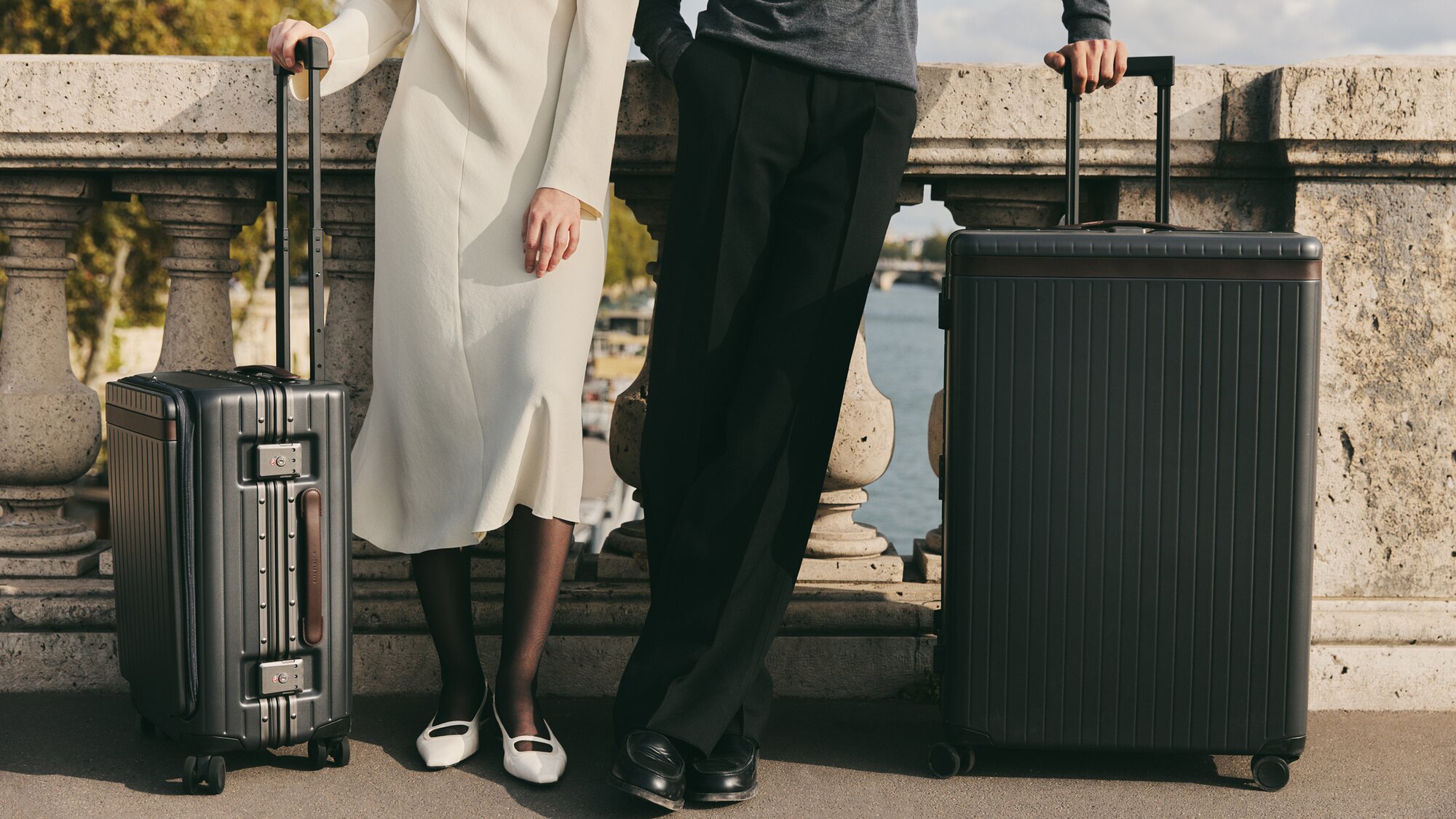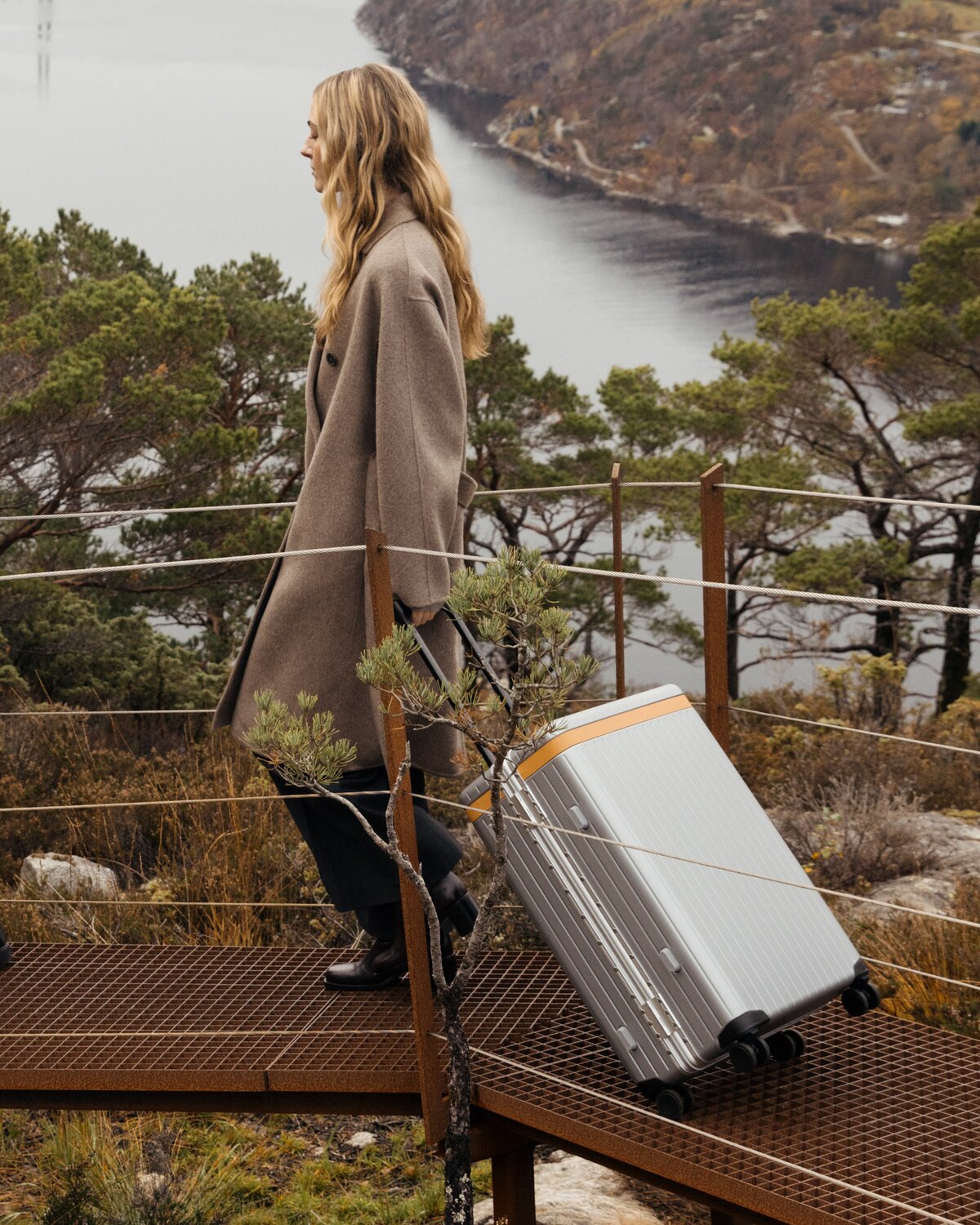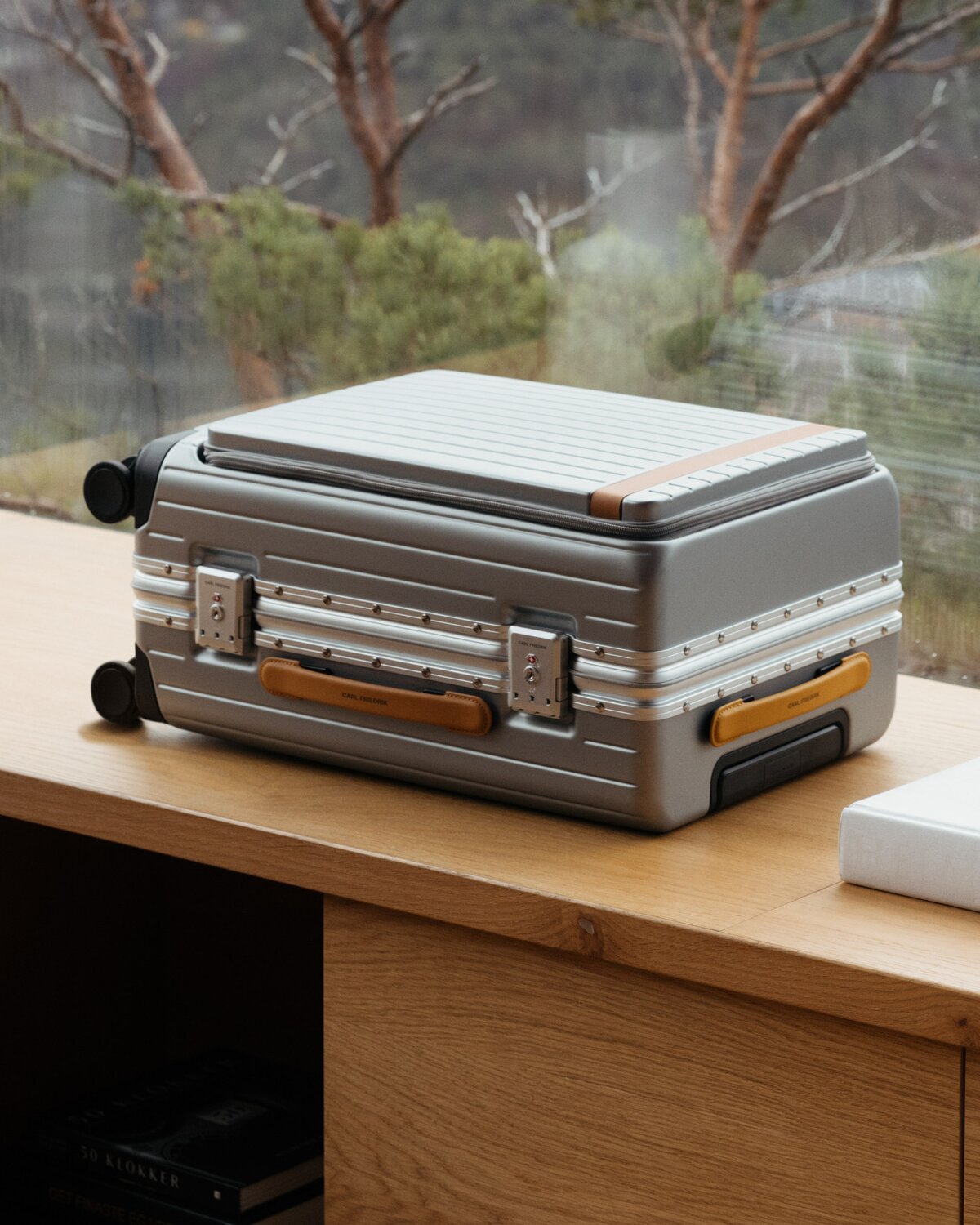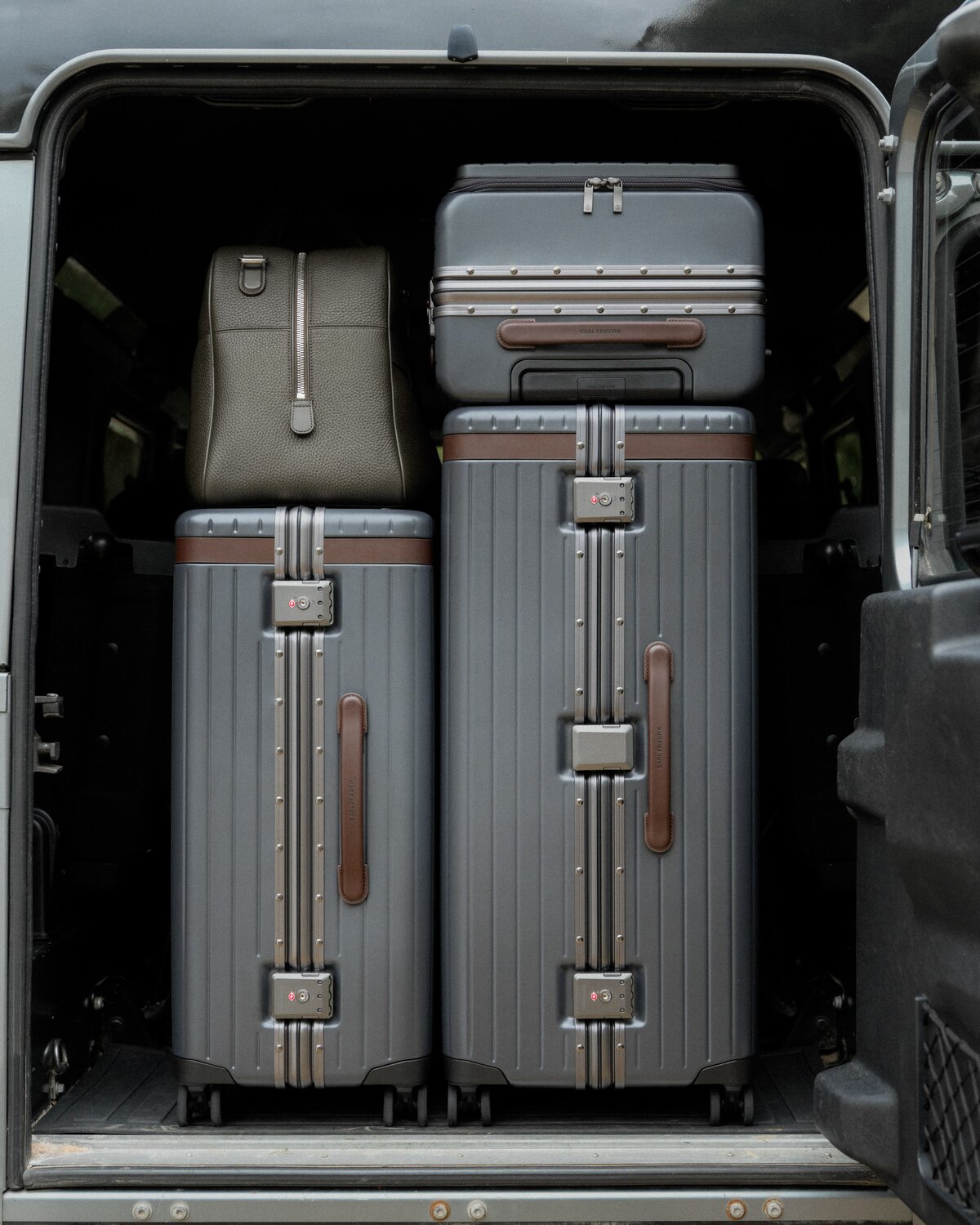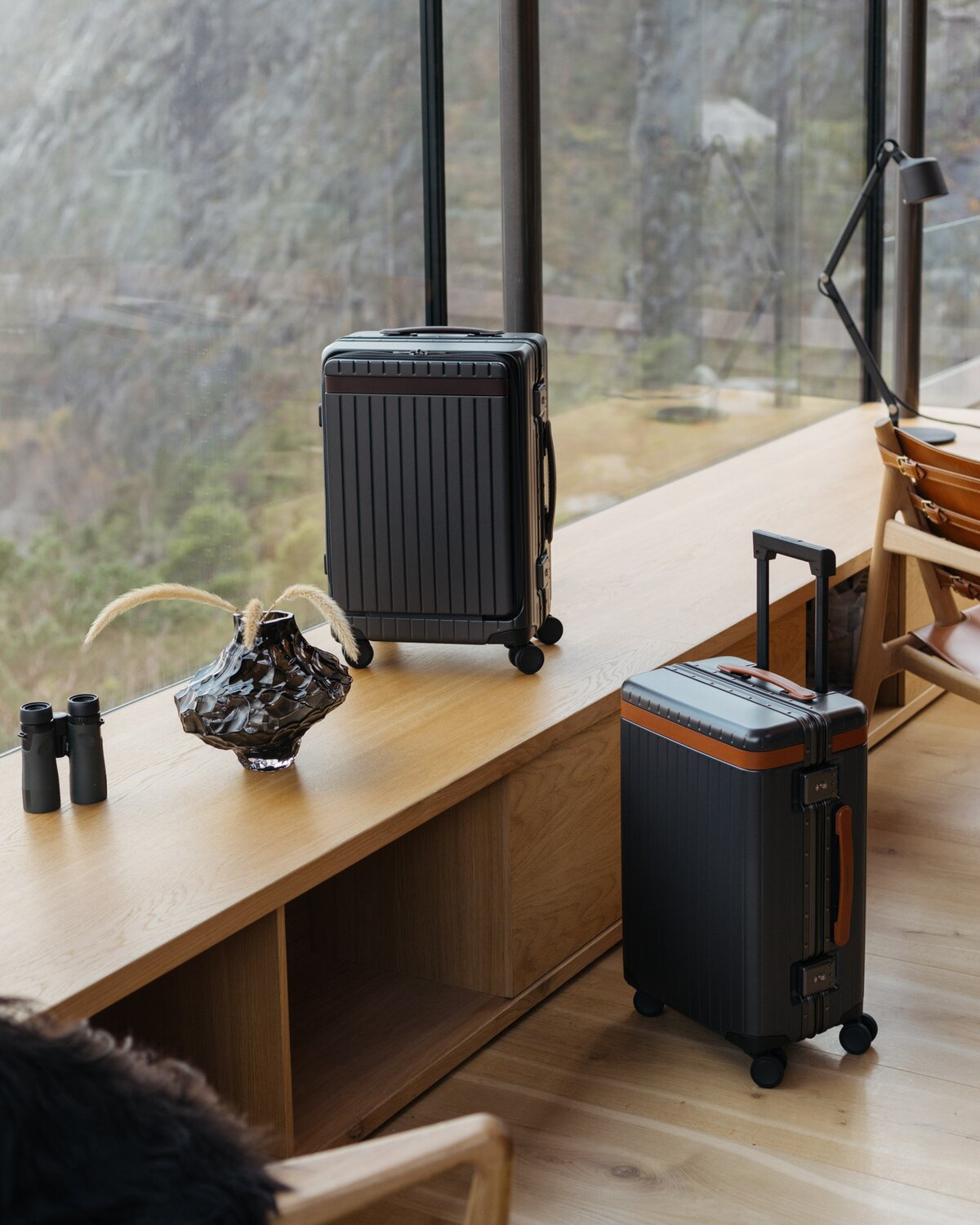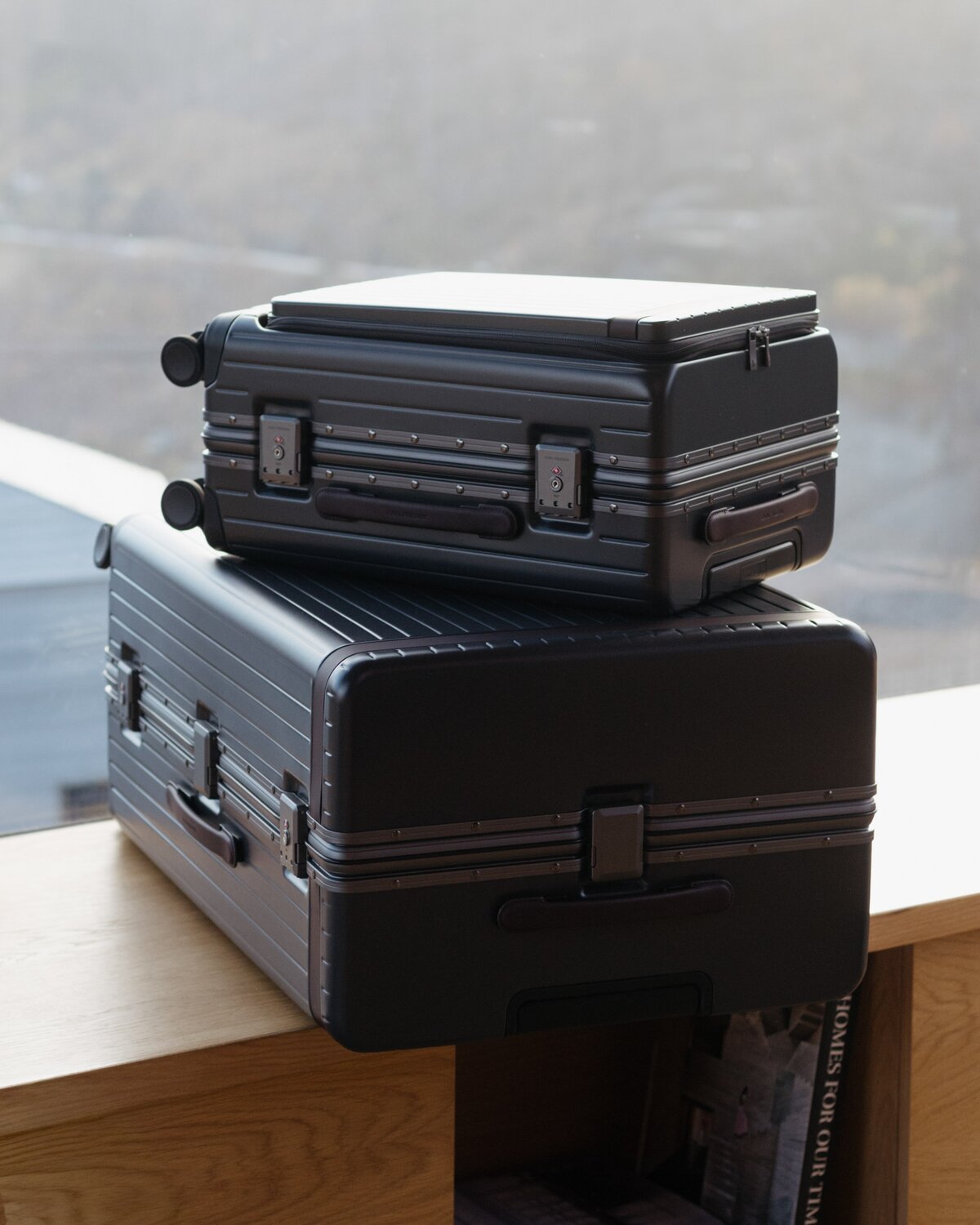The carry-on vs. checked bag debate is more than a matter of preference. It impacts cost, convenience, travel speed and the safety of belongings.
A carry-on bag, also known as hand luggage, is kept with you in the cabin and must conform to strict size guidelines. A checked bag, by contrast, is handed over to the airline and stored in the aircraft’s cargo hold until you collect it at your destination.
From avoiding baggage fees to managing the risk of lost items, this guide explores the differences between carry-on and checked bag options, including their pros and cons, how to decide between them, and what to pack in each. Whether you’re weighing up the carry-on bag vs. checked bag dilemma or simply planning your next trip, you'll find practical advice and resources to help.
Contents
What is a checked bag?
What is a carry-on bag?
Difference between carry-on and checked bags
Choosing between a checked bag vs. carry-on
Benefits of checked luggage
Disadvantages of checked luggage
Benefits of carry-on luggage
Disadvantages of carry-on luggage
Pros & cons of a carry-on vs. checked bag
Carl Friedrik carry-on & checked bag options
Wrapping up: the carry-on vs checked bag decision
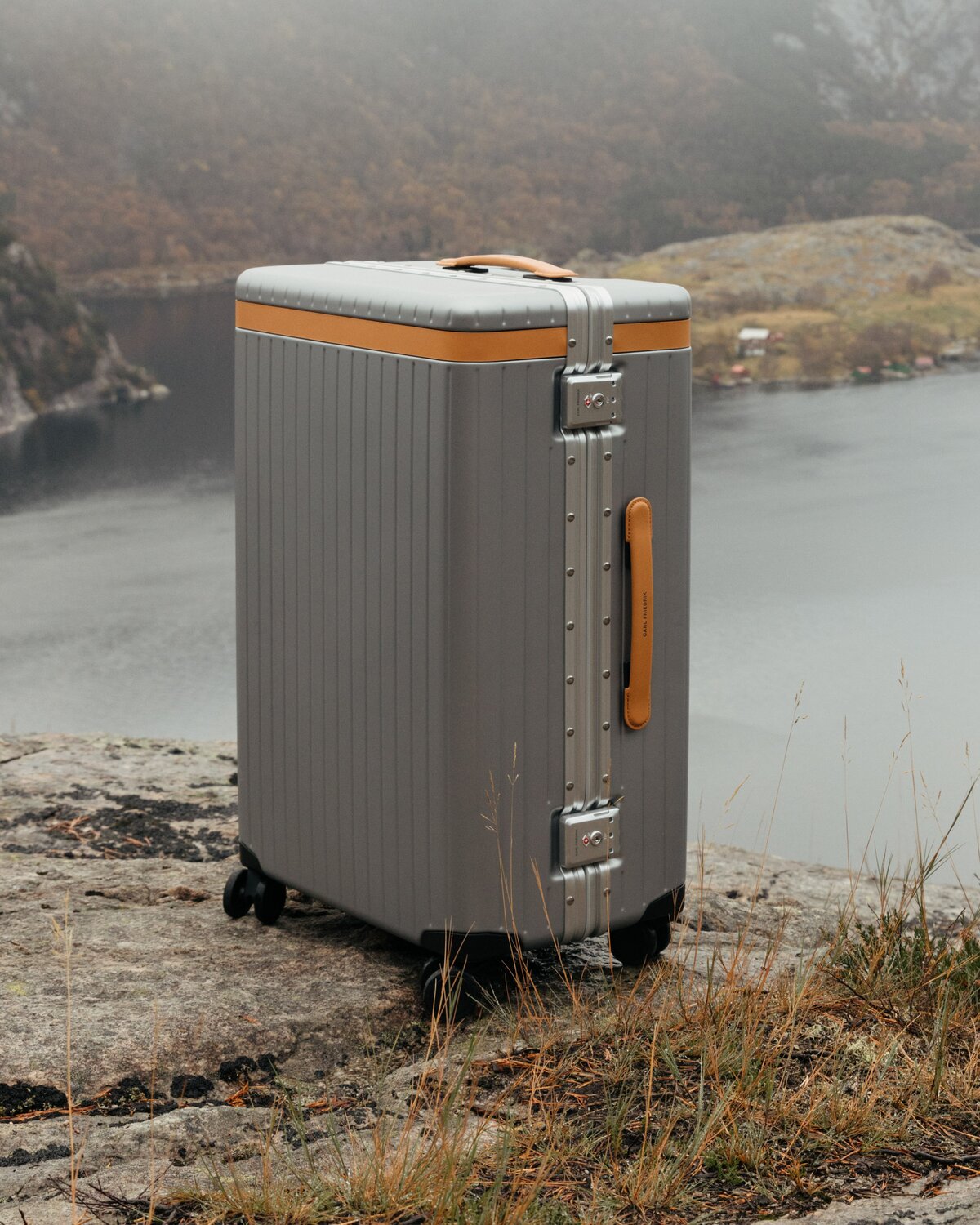
The Check-in
What is a checked bag?
A checked bag or checked baggage is the luggage you hand over to an airline before boarding. After you drop it off at the check-in counter, it’s weighed, tagged, screened and passed through the airport’s baggage handling system. It travels in the aircraft’s cargo hold and is inaccessible during the flight.
Checked luggage is commonly used for larger items, long trips or items that don’t comply with carry-on rules. Each airline has its checked baggage allowance, and fees may apply depending on your route, ticket class and baggage size. It’s essential to familiarise yourself with your airline’s checked bag policy to avoid unwanted charges or restrictions. For more detailed measurements, visit our guide on checked baggage sizes.
Checked bag dimensions & size limit
Most airlines allow checked bags up to 158 cm (62 inches) in total linear dimensions (length + width + height). Unfortunately, there are no universal check-in size guidelines: airlines generally have their unique measurement allowances. For example, the dimensions for an item of checked luggage on a British Airways flight are up to 90cm x 75cm x 43cm. Other airlines, like EasyJet, do not specify length, width or height restrictions. Their rule is that the total size of a checked bag (width + length + height) cannot exceed 275cm. Emirates is another popular airline that follows this method: its limit is 300cm.
We recommend you check the luggage size restrictions of the airline you’re flying with before arriving at the airport, and weigh your luggage too. Airline carriers will charge for oversized baggage, never the best way to kick-off your dream Caribbean cruise.
Why do we pay for checked bags now?
The rise in checked baggage fees stems from the airline industry's move towards unbundled pricing. Budget carriers were among the first to separate base fares from luggage, helping them offer cheaper flights while covering fuel and operational costs. These include airlines such as RyanAir, WizzAir or EasyJet. That said, some full-service airlines may include one or two checked bags in the ticket price. Policies vary widely, so it’s important to check baggage allowances before flying.
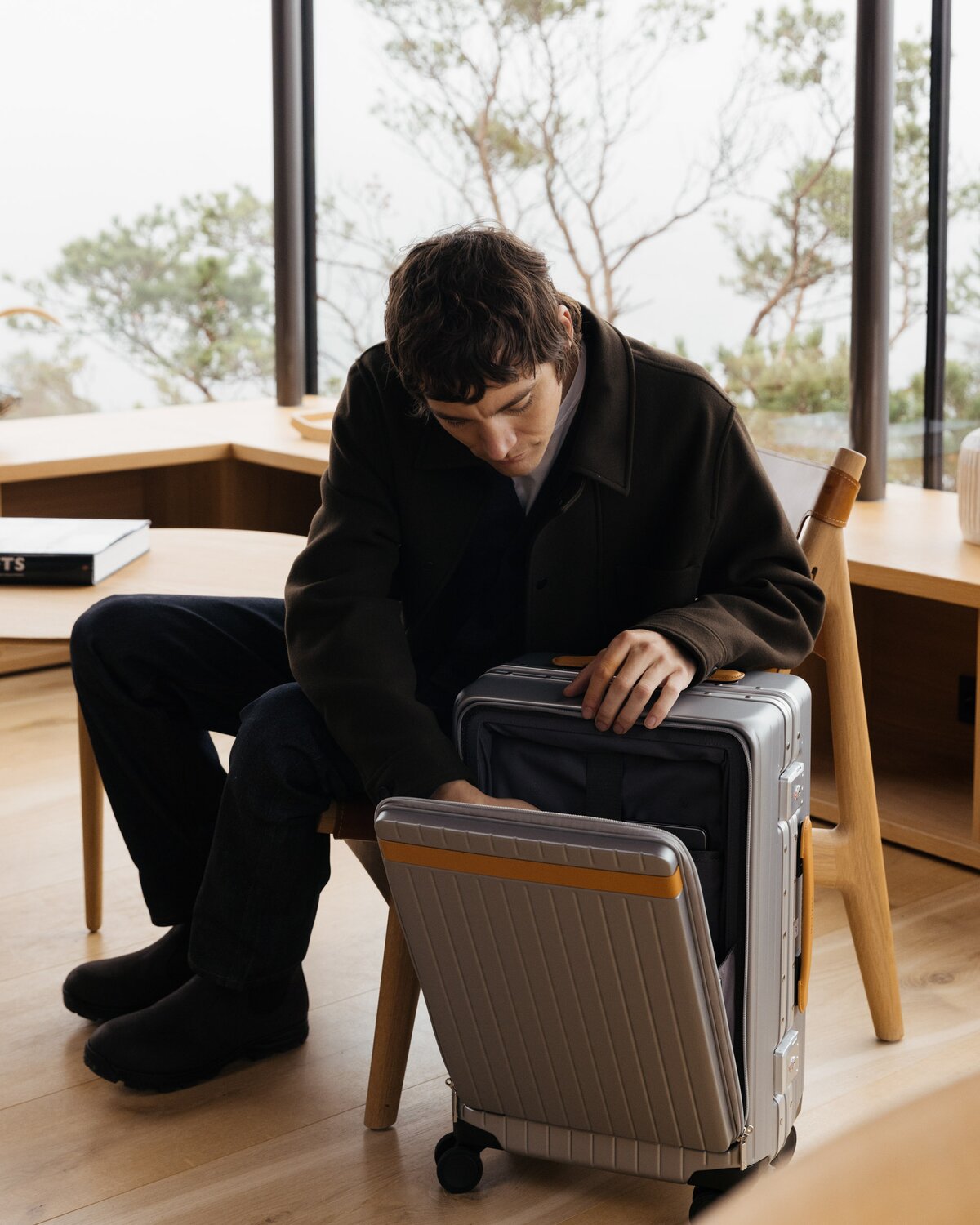
The Carry-on X
What is a carry-on bag?
A carry-on bag, also known as hand luggage or cabin baggage, is a piece of luggage that passengers are allowed to bring into the airplane cabin and store in the overhead compartment or under the seat. That said, it must meet specific airline size and weight limits to fit in the overhead locker or beneath the seat.
It’s ideal for short breaks and business travel. With your carry-on always in sight, you reduce the risk of loss, avoid waiting at baggage claim, and save on luggage fees. This makes a carry-on vs. checked bag a key consideration for frequent travellers.
Carry-on dimensions
A standard carry-on bag size is generally 55cm x 40cm x 20cm, with weight limits between 7kg and 10kg. Travellers in premium cabins may receive extra allowances. This can vary depending on which airline you are travelling with. For more details, check our full carry-on size guide.
How many carry-on items can I bring?
Most airlines allow one standard-sized carry-on bag and one smaller personal item. The latter must fit beneath the seat in front of you. Using a backpack as a personal item is a smart choice for travel documents, electronics and essentials.
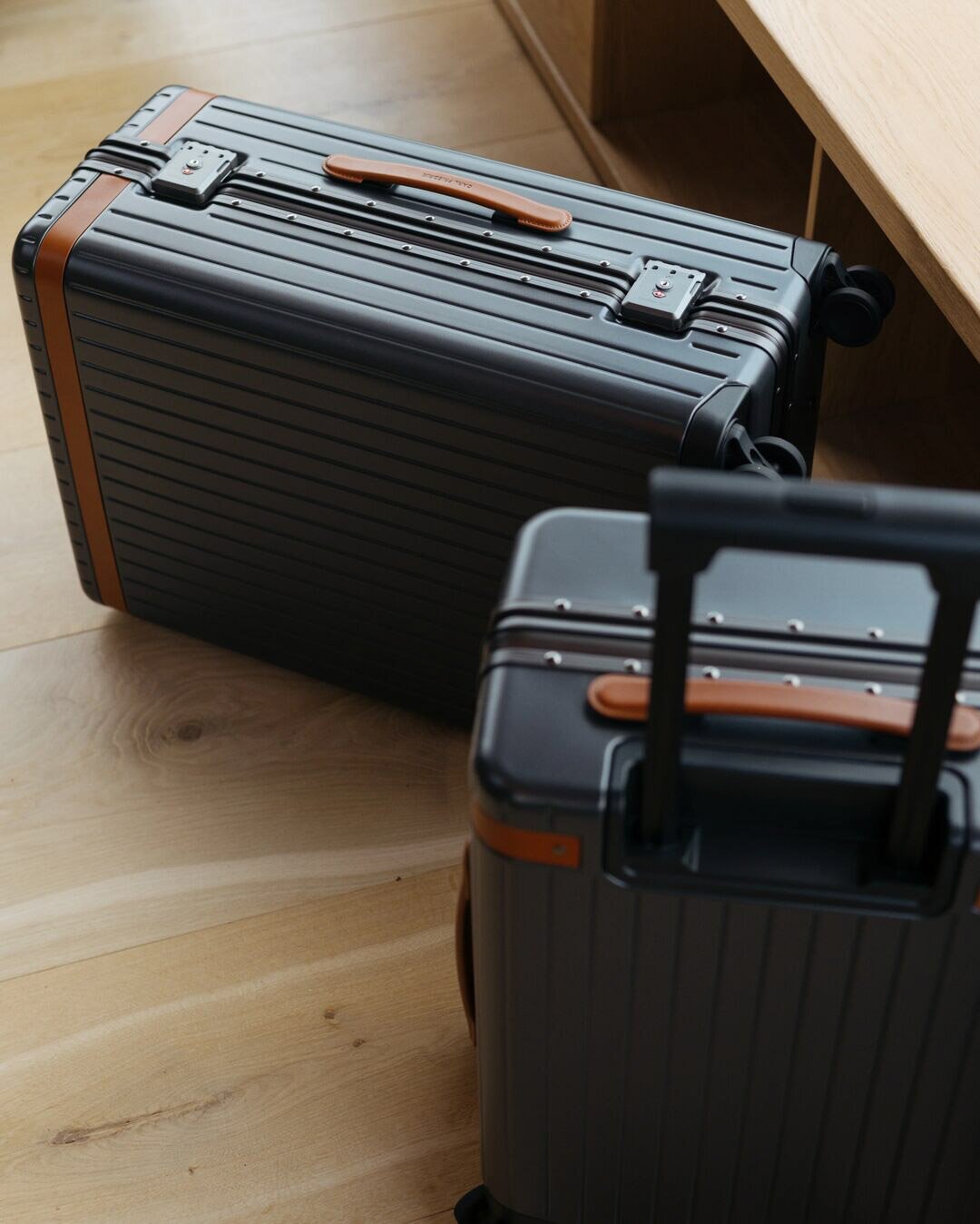
The Luggage Set
Difference between carry-on and checked bags
The difference between a carry-on and a checked bag lies mainly in size, convenience and how they’re handled during a flight. Carry-on bags stay with you in the cabin and are ideal for short trips, while checked luggage goes in the aircraft’s hold and suits longer journeys or bulkier items.
A carry-on bag, also known as hand luggage, is typically small enough to fit in the overhead locker or under the seat in front of you. Travellers often choose carry-on bags to avoid waiting at baggage reclaim, reduce the risk of lost luggage and move through the airport quicker. However, carry-on luggage has stricter size and liquid restrictions, and weight limits may vary by airline.
Checked luggage, on the other hand, is placed in the hold of the plane and is not accessible during the flight. It usually allows for significantly more space and weight, making it a better option for longer trips or when travelling with items that can’t be taken in the cabin, such as liquids over 100 ml or certain sports equipment. That said, checked bags can incur additional fees, and there is always a slight risk of damage or loss during transit.
Carry-on vs. checked bag comparison table
| Feature | Carry-on luggage | Checked luggage |
|---|---|---|
| Restrictions | Liquid containers more than 100 ml, sharp objects (scissors, etc.) | Lighters, lithium batteries and alcohol over 70% ABV |
| Size | For the UK, generally within 20-25 cm in width, 33-38 cm in height and 48-58 cm in length | Varies depending on the airline and flight destination |
| Weight | Generally up to 23 kg in the UK | Generally up to 32 kg in the UK |
| Ease of travel | Relatively small and lighter | Heavier and harder to manoeuvre |
| Safety | Relatively safe and secure, it stays with the owner at all | Can get damaged and/or lost during transit |
| Ideal for | Short trips (1-5 days) | Longer trips (6+ days) |
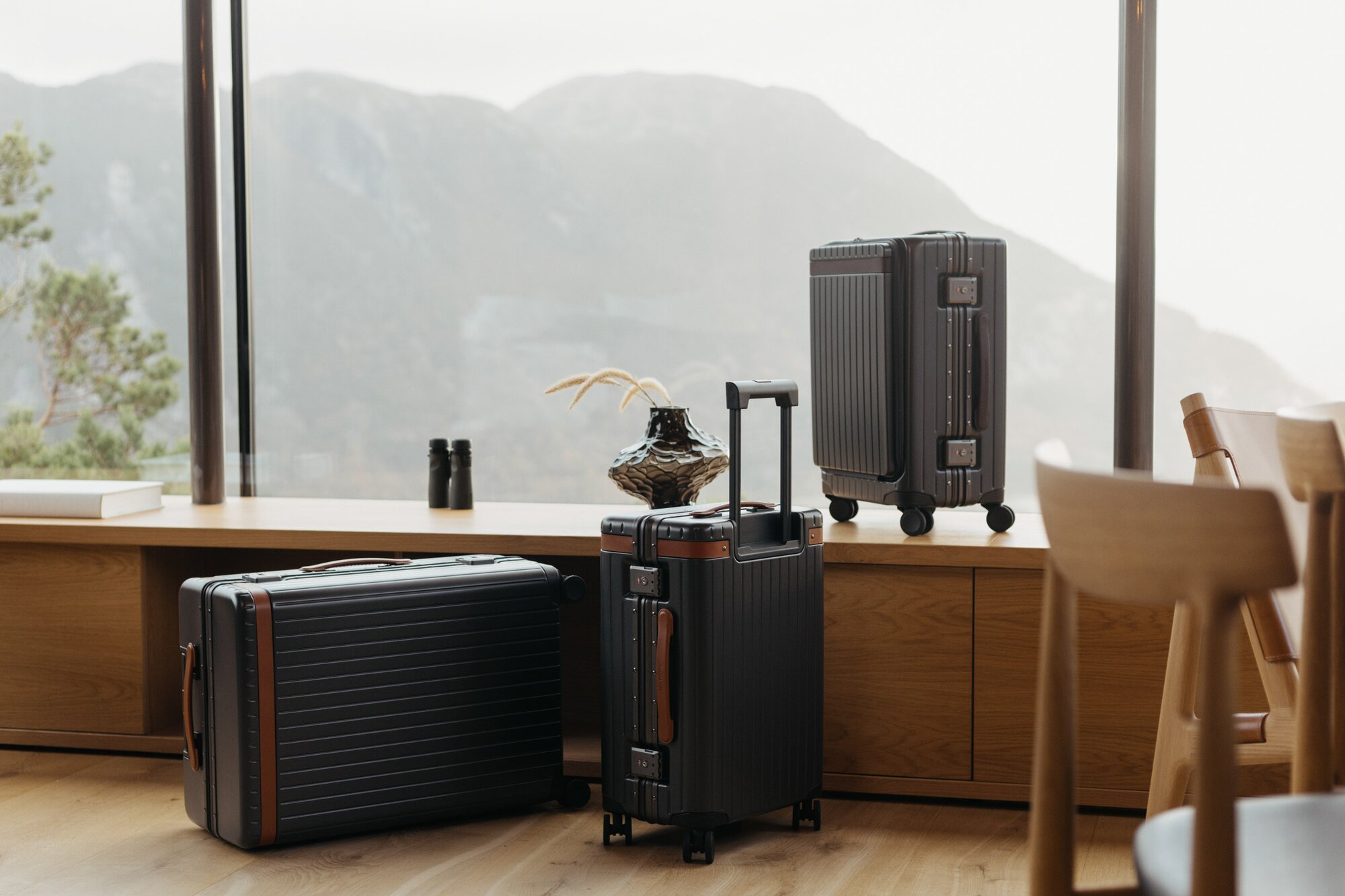
The Luggage Set
Choosing between a checked bag vs. carry-on
Several factors will help you determine whether to bring a checked bag vs. a carry-on on your journey. Consider the duration and destination of your trip. For a summer weekend in Paris, a carry-on will likely suffice. For a ski holiday in Val d’Isère, you’ll probably need checked luggage.
Your packing style also matters. Heavy packers may need a larger checked suitcase, while minimalists might favour compact cabin bags. Costs come into play as well, checking a bag often incurs a fee, so carry-on only travellers avoid extra charges.
You’ll also need to think about your arrival experience. If you’ll be navigating narrow cobblestone streets or taking public transport, smaller luggage will make life easier. If you’re headed to a luxury resort, checked baggage might be more convenient.
Along with your arrival experience, you must think about the airport you’ll be arriving at and flying out of. Carry-on lets you skip queues and keep your bag nearby, but you’ll need to carry it through the terminal. With checked baggage, you’re free of the burden until reclaim, but you risk delays and potential mishandling.
Benefits of checked luggage
Before making a decision, it’s important to recognise the potential upsides of checking a bag when flying.
Airport convenience
There’s certainly a strong argument that checking in luggage facilitates a smoother airport experience. The hectic queues at customs and the dash to your gate are that bit easier when you’re not hauling a heavy suitcase behind you. And there’s also the added luxury of boarding the plane and relaxing straight away, instead of tussling with your neighbours for the overhead compartment space.
Additional packing space
Put plainly, checked bags can be both heavier and larger than carry-ons, meaning you can fit plenty more linen suits or tasselled loafers inside. If a spot of holiday shopping is your thing, the extra suitcase space will go a long way. Overall, checked bags allow more generous space and weight, enabling you to pack larger items, more clothing or souvenirs. This is especially useful for longer trips or bulkier wardrobes
More relaxed TSA regulations
TSA regulations are far more relaxed for checked baggage. You can pack larger liquid containers, razors and other restricted items that may not be allowed in the cabin.
Most of us have been there. That manic five minutes before reaching customs, where you’re forced to fit all the liquids from your carry-on into one tiny, see-through plastic bag. Only to find, as the baggage attendant manning the X-ray machine is all too happy to tell you, that some of your liquid bottles exceed the 100ml limit. And just like that, an expensive new moisturiser and your favourite Aesop aftershave balm are in the bin. Too bad. TSA’s checked baggage restrictions are a lot less severe, not least when it comes to liquids.
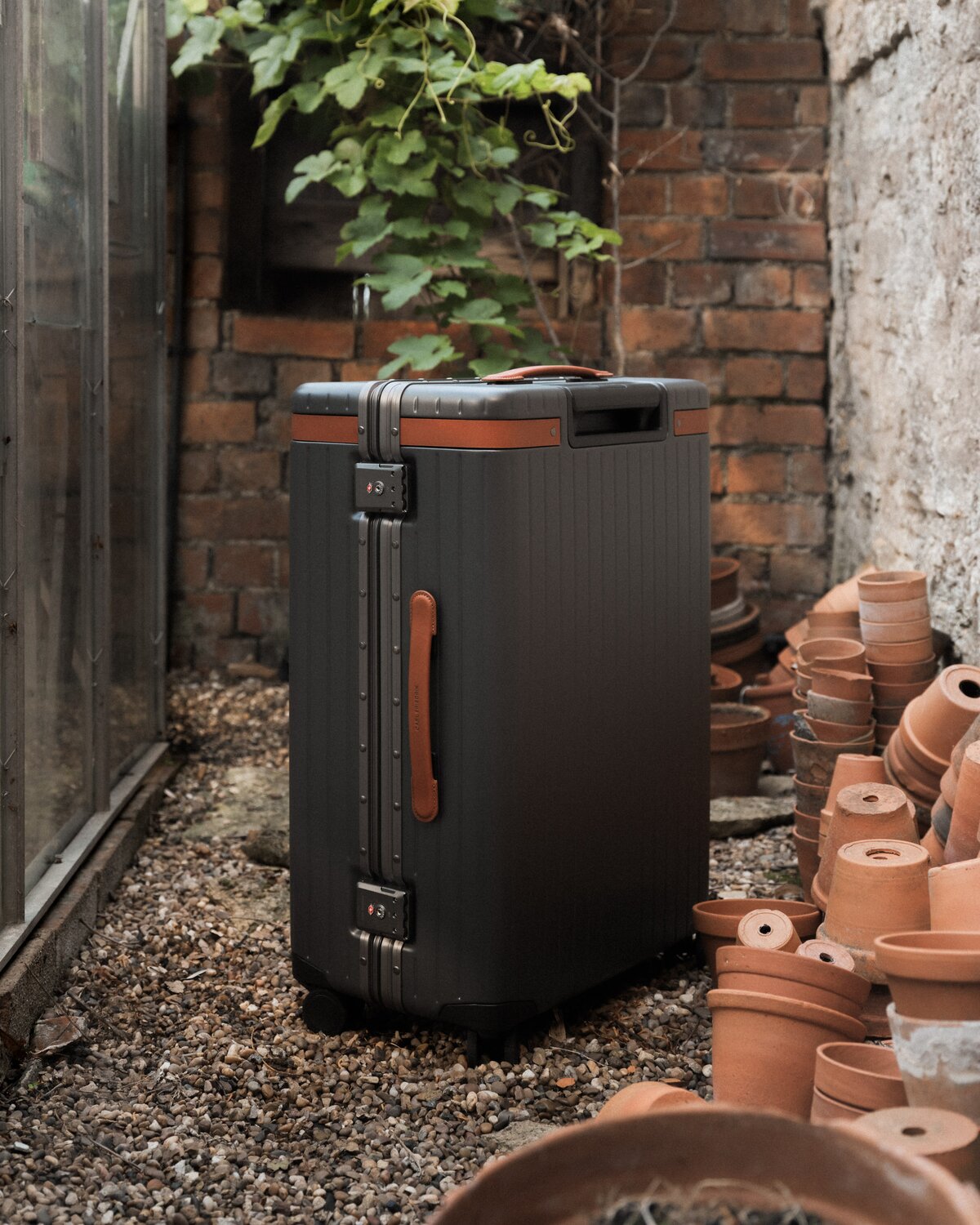
The Check-in
Disadvantages of checked luggage
Despite their benefits, checked bags also come with a few drawbacks. Here are just a few to get you started.
Additional fee
Most airlines across the globe charge extra for checked luggage. In the UK, it costs around £30-60 per leg to check one bag in the hold. Prices tend to go up the more suitcases you add. Of course, if you travel in business or first class, a checked luggage allowance of 1-2 suitcases will likely be part of the package. Other variables, like whether it’s a domestic or international flight and loyalty perks, can influence your luggage allowance as well.
Potential of theft or damage
Checked bags go through multiple handling points and are occasionally lost or damaged. The lack of direct oversight makes them more vulnerable than carry-on luggage. We’ve all heard the horror stories: luxury travel cases that are visibly damaged as they reach baggage reclaim or have disappeared in transit altogether.
In fact, despite increased automation and high-speed conveyors boosting productivity, SITA (Société Internationale de Télécommunications Aéronautiques) reported 1.4 million items of lost luggage in 2019.
Time-consuming
Minutes (sometimes hours) spent queuing at the check-in desk or waiting at the conveyor belt for luggage do add up. So, if time is of the essence, you might be swayed by the streamlined nature of travelling with a carry-on vs checked baggage.
Benefits of carry-on luggage
For travellers seeking speed, savings and flexibility, carry-on luggage has several key benefits.
Agility and efficiency
Whether you’re boarding the Eurostar in Central London or climbing four flights of stairs to find your Airbnb, moving around with a light item of carry-on luggage is more flexible than carrying an ultra-heavy case. If you’ve got a long and physically demanding journey ahead of you, there’s only one way to go. Travelling with a carry-on allows for quicker transitions through the airport and between destinations. You skip queues and can often exit the terminal faster upon arrival.
Accessibility
Flight delayed? Long layover? Bored and sleep-deprived on the plane? In any of these situations, having carry-on luggage on hand is a massive coup. Be it a sleeping mask, a novel or even a toothbrush, the essentials stored inside can enlighten a bad travel situation and bring a touch of comfort. Having access to your belongings mid-flight or during layovers can make a big difference. From snacks to chargers, your essentials are always within reach.
Safety
It’s a lot more common to lose checked luggage than carry-on luggage during a holiday. The latter remains under your supervision throughout your journey, while checked bags go on a holiday of their own once you leave them at the airline’s check-in kiosk. Particularly if you’re travelling with valuables, the carry-on lifestyle allows a level of surveillance that can’t be matched. Carry-on luggage is under your watchful eye throughout the journey, significantly reducing the risk of theft, loss or mishandling.
Cost savings
As previously mentioned, the vast majority of airlines will not charge you for boarding with carry-on luggage or a personal item. With most airlines offering a complimentary carry-on allowance, travelling light can help you avoid extra fees altogether.
Disadvantages of carry-on luggage
Though convenient, travelling with a carry-on bag does have its limits. Packing efficiently and understanding carry-on restrictions can make all the difference.
Packing complications
With less packing space to work with, it can be difficult to fit in everything you need for your trip, especially for those longer than 4-5 days. With that said, there are so many helpful packing articles online, making it easy to pick up tricks and learn how to maximise space.
Stricter TSA guidelines
Airport security regulations, such as those set by the TSA in the United States, are generally stricter for carry-on luggage. Anything that could be used as a weapon, from sports equipment to sharp grooming tools like scissors, is off-limits. Liquids must also be under 100 ml and sharp items are prohibited. A rule that won’t affect many travellers, but is worth bearing in mind to avoid unwanted delays at customs.
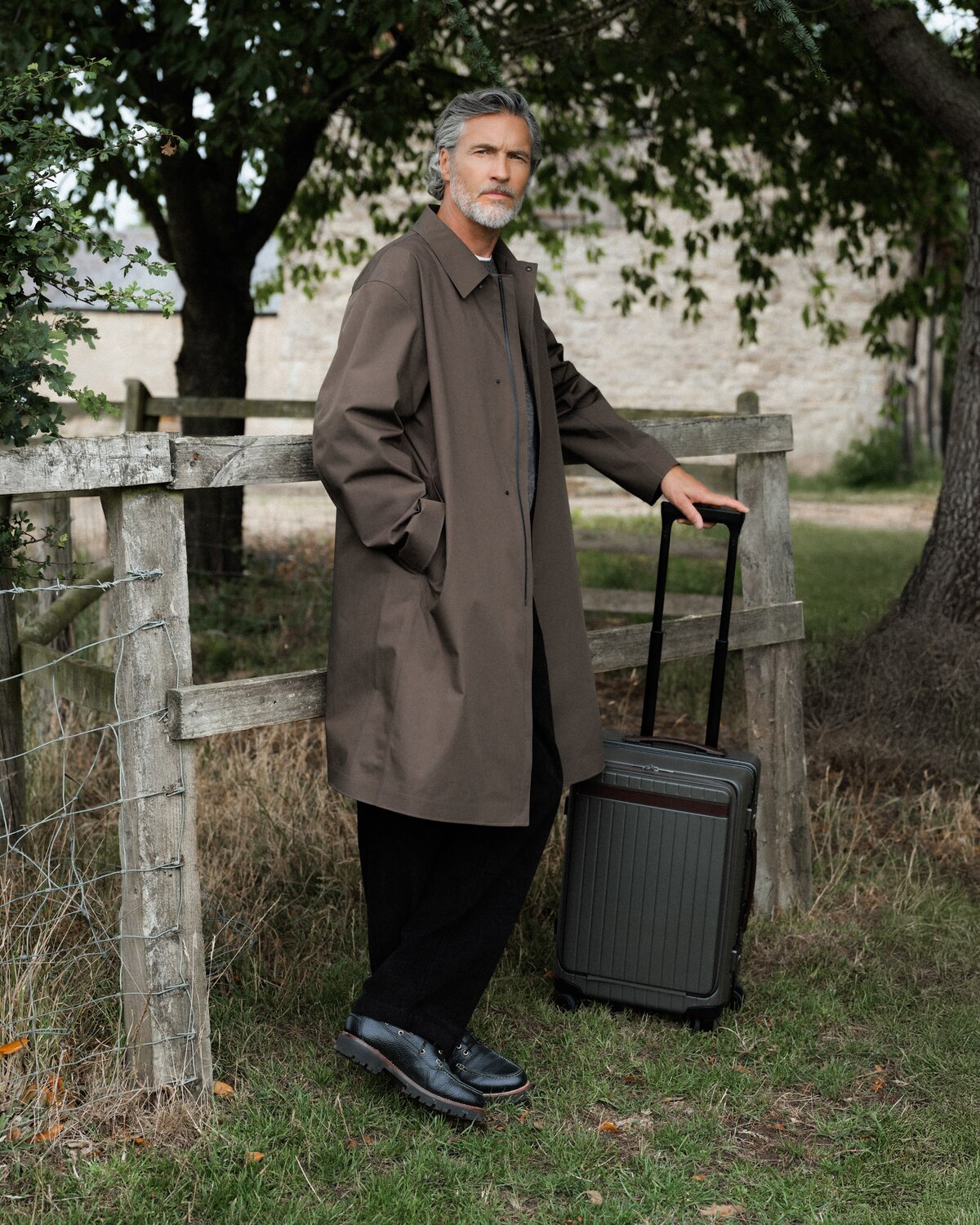
The Carry-on X
Pros & cons of a carry-on vs. checked bag
Choosing between a carry-on vs. a checked bag comes down to your travel needs. The table below highlights the key pros and cons of each option.
| Feature | Carry-on luggage | Checked luggage |
|---|---|---|
| Convenience | Fast airport exit | Less to carry within the terminal |
| Cost | Usually free | Often a fee |
| Capacity | Limited space | More room for packing important items |
| Security | Safer because it is always with you | Risk of loss or damage in the cargo hold |
| Access | Accessible during your flight | Inaccessible during your flight |
| Restrictions | Stricter liquid allowance and many rules for other items | Few restrictions for items |
Carl Friedrik carry-on & checked bag options
No matter your preference in the carry-on bag vs checked bag debate, Carl Friedrik has premium luggage with lifetime warranties to meet your needs.
The Carry-on X is a sleek cabin bag with silent 360° spinner wheels and a front pocket for seamless access to essentials like travel documents and electronics. If you are looking for checked luggage, we recommend The Check-in, which offers 69L of capacity, a hard-wearing aluminium lock frame and elevated aesthetics. For extended trips, The Large Check-in delivers 105 L of packing space: the ideal companion for serious packers.
Wrapping up: the carry-on vs checked bag decision
Ultimately, there is no one-size-fits-all answer to the carry-on vs. checked bag debate. Travellers must weigh their priorities (cost, convenience, duration and destination) to decide which luggage option works best for their journey. Many seasoned travellers use a combination of both. A carry-on for essentials and flexibility, paired with a checked bag for overflow or special needs.
What size is a checked bag?
How big can carry-on luggage be?
Is it better to have a carry-on or a checked bag?
What is the difference between a carry-on and a checked bag?
Can a backpack be a carry-on bag?
What to put in a carry-on vs. checked bag?
The latest product news and travel guides? It's just a sign-up away.
